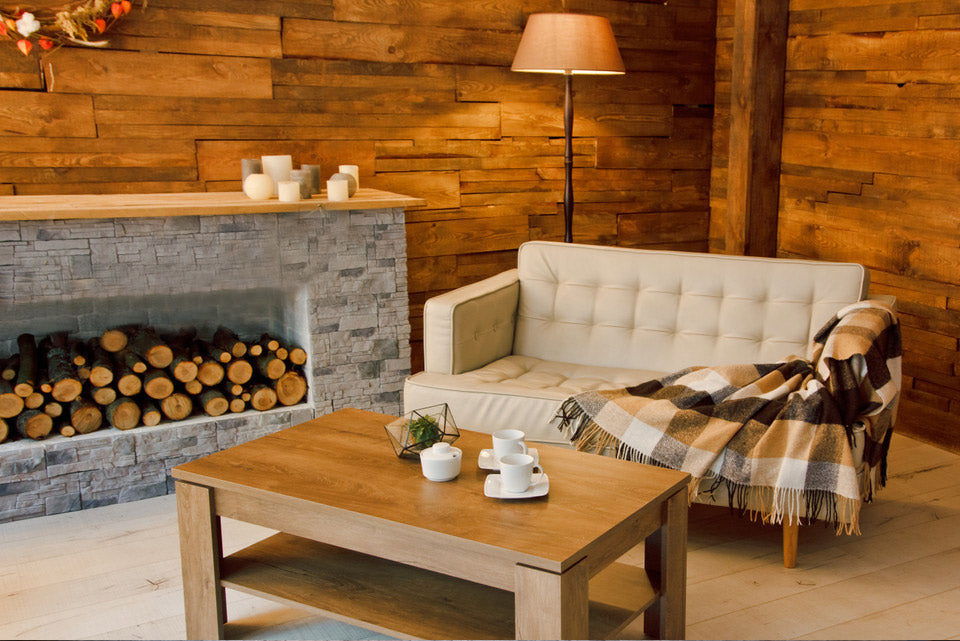4 Ways to Prevent Furniture from Sliding on Hardwood Floors
Posted by SPECIAL HARDWOOD

Many people dream of having hardwood floors in their homes. They’re beautiful to look at, simple to maintain, and, if cared for properly, will last a lifetime. However, even perfectly cared-for wood floors can become slippery, posing a potential hazard.
A fresh coat of oil or other protective finish or even dusty conditions can cause your furniture to shift or slide around during regular use. Over time, this can cause scratches and scuffs, requiring more frequent refinishing.
If you’re wondering how to stop furniture from sliding on hardwood floors before it gets damaged, here are 4 great tips you can put into practice
How to Prevent Furniture from Sliding on Hardwood Floors
There are a few ways to prevent furniture from moving around on slippery hardwood floors. The best method depends on the overall aesthetic look you’re happy with, your furniture's specific measurements or design, and whether you want a concealed solution or are comfortable with a more obvious remedy.
1. Regular Dusting and Cleaning
Dust is made up of tiny particles that, in a thick enough layer, can act like tiny marbles scattered across your floor. Your furniture can “roll” across a layer of dust, and this shifting can damage the flooring and grind small particles, marrying your floor’s finish.
Dust will also wear down the backing of any rug pad or other underlayment or the pads or grippers mentioned further down this list, reducing their effectiveness and eventually requiring you to buy new ones.
Keeping your hardwood floor clean with regular maintenance and quality cleaning products made especially for wooden flooring can not only keep your floors looking their best but also prevent your furniture from sliding around.
Our 2C Oil by Monocoat is an excellent choice for cleaning and preventative maintenance. It’s a two-component finishing system perfect for high-traffic areas. It cures quickly, so you can get the most use out of your home and won’t have to wait a long time before the floor sees regular traffic. Best of all, it penetrates and protects the wood without making it slippery or slick, preventing sliding furniture and future damage.
2. Rubber Padding
The best option for furniture with legs that aren’t prominently visible may be rubber or silicone pads. They’re one of the most inexpensive ways to keep your furniture from slipping and can be purchased to fit specific sizes of furniture. They’re a great quick fix, but be aware that this kind of padding will eventually stretch out of shape and require more frequent replacement.
3. Furniture Grippers
Furniture grippers are another great alternative. They’re a more robust version of rubber padding and can typically be customized to match your furniture’s specific measurements. Because they can be trimmed to fit the legs of your furniture more precisely, grippers aren’t as apparent as rubber pads, and some people may prefer this more streamlined look. They’re also suitable for furniture with wide or unconventionally shaped legs.
4. Wall Spacers
These are also called “stop blocks” and have long been a secret weapon of interior designers. They’re perfect for beds, sofas, loveseats, and any heavier or larger furniture. They fit between your furniture and the wall behind it, so they’re not suitable for something like a couch in an open-plan living room.
Though they’re very effective and easily concealed by the more oversized furniture they’re used for, they have one major drawback. They’re generally custom-made, which can be expensive unless you’re a DIY enthusiast who’s handy with woodworking tools.
Guarding against the damage to regular foot traffic—and sliding furniture—is a good idea to keep your floor looking its best. No matter which method you choose to prevent furniture from sliding, keeping your hardwood floor in great condition with regular maintenance and proper care will ensure you and your family can enjoy and appreciate it for many years to come.
About Special Hardwood Products
What Does Special Hardwood Products Offer?
We specialize in the highest quality wood finishing products, including finishing stains and oils, and maintenance solutions for wood countertops, flooring, and more. Our products are trusted by professionals and DIYers alike.
Is Rubio Monocoat Available at Special Hardwood Products?
Yes, we carry Rubio Monocoat, Ciranova and Mafi wood care products and finishing oils, perfect for flooring, butcher block countertops and other wood furniture.
Can I Get Advice on Wood Finishing Projects?
Of course! Our team is here to help with tips, product recommendations, and expert advice to ensure your project is a success. Call us Monday - Friday from 8am-4pm EST at 1-877-928-9663 .
TAGS:
SHARE:


